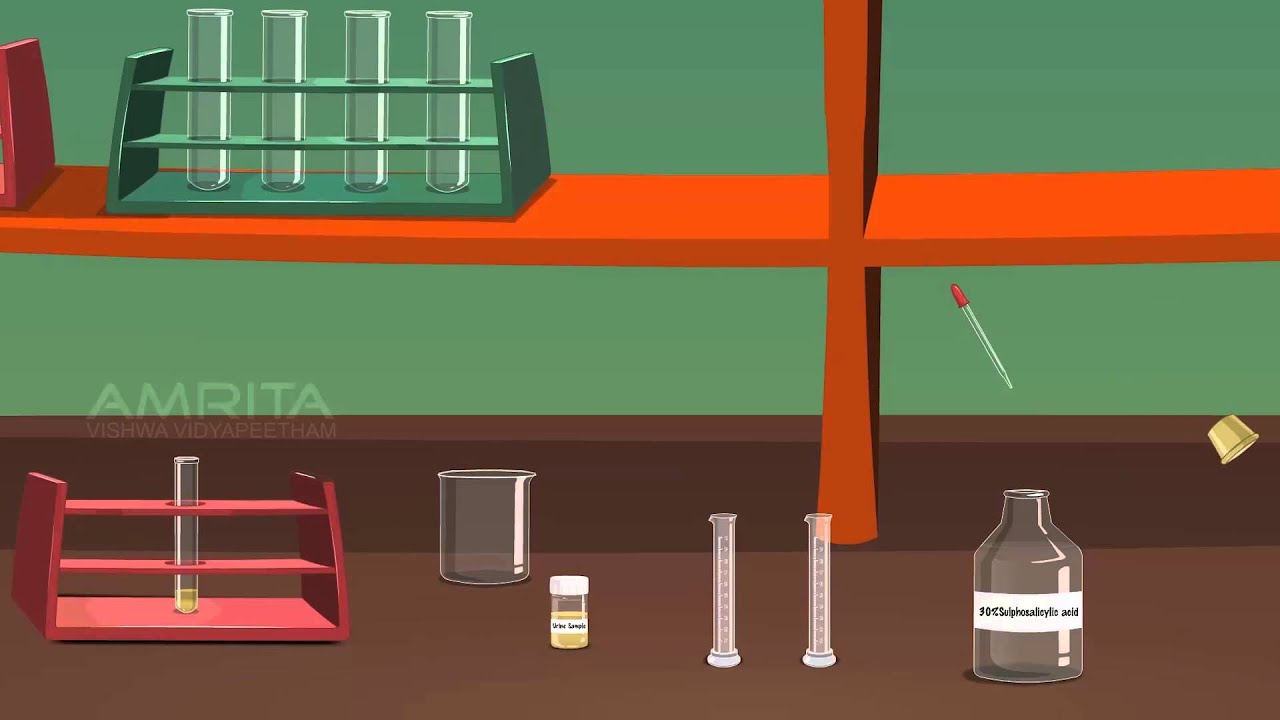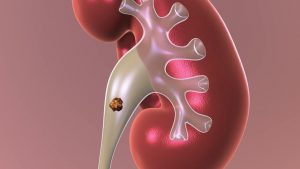This video channel is developed by Amrita University’s CREATE http://www.amrita.edu/create ▶ For more Information @ http://amrita.olabs.edu.in/?sub=79&brch=17&sim=208&cnt=1 ▶ Amrita Online Lab Project Website http://www.olabs.edu.in/ ▶ Subscribe @ https://www.youtube.com/user/amritacreate ▶ Like us @ https://www.facebook.com/CREATEatAmrita Copyright © 2017 Amrita University Developed by Amrita University & CDAC Mumbai. Funded by MeitY (Ministry of Electronics & Information Technology) Detection of Albumin in Urine :- Albumin is a protein produced by the liver and is mainly found in the blood and filtered by the kidneys. Its main functions are the ability to maintain intravascular oncotic pressure, meaning it keeps the fluid pressure stable within the blood vessels. It is also a carrier protein for steroids, fatty acids, and thyroid hormones in the blood. When the kidneys are working as they should, there may be a very small amount of albumin in the urine. But when the kidneys are damaged, abnormal amounts of albumin leak into the urine. This is called albuminuria. If the amount of albumin is very small, but still abnormal, it is called microalbuminuria. We can test the presence of albumin in urine using Heller’s test and Sulphosalicylic acid test. Heller’s test causes the precipitation of albumin and forms a white ring in the solution. When heated or treated with sulphosalicylic acid, albumin undergoes coagulation and forms a white turbidity (cloudiness) in the solution. This video explains how to detect the presence of albumin in urine.

Detection of Albumin in Urine – MeitY OLabs
- Post author:
- Post published:June 11, 2021
- Post category:Uncategorized
- Post comments:0 Comments
You Might Also Like

Physiotherapy in Obstetrics Video – 13

What is Fish Oil? Omega-3 Benefits & Side Effects Review by Guru Mann

Fencing Video – 2

How To Increase Sperm Count Fast & Naturally ?

Vitamins Minerals For Health Video – 2

Muscle Building Workout & Squats Video – 37

Intermittent Fasting & Fasting Video – 13

McKenzie Press-up (Back Extension Exercise) -HD

5 Best pre-workout meal for Muscle Gain |

Observation: Non-surgical Approach to Kidney Stones

Work It! Back Extensions on Ball

Blood Test Procedure | Nuffield Health

Propranolol

Tricep dips on floor

Biceps concentration curls

L Glutamine Benefits and the Dangers!

Spa History Video – 2

First Aid Video – 4

Top 5 Best Whey Protein Powder Supplements 2016 First Half | MassiveJoes.com | Isolate Shakes

5 Quick Yoga Poses For THYROID Problems & Disorders

BMR to CMOP

Anabolic Steroids – History, Definition, Use & Abuse Video – 4

Hair Growth Animation

Concentration Curls – Biceps Exercise – Bodybuilding.com

Diazepam Side Effects

Close Grip Bench – HASfit Triceps Exercise Demonstration – Close Bench Triceps Press – Tricep


Exercise Intensity

Wall Walk Anatomy

Bodybuilding Nutrition, Diet Recipes & Workout – 20

Physical and Skill-related Components of Fitness

How to Do the Overhead Shoulder Press | Arm Workout
![Read more about the article What Is Creatine | Benefits, side effects And Dosage Of Creatine Monohydrate [ hindi ]](https://videos.drmaheshkumar.com/wp-content/uploads/2021/05/What-Is-Creatine-Benefits-side-effects-And-Dosage-Of-Creatine-Monohydrate-hindi--300x169.jpg)
What Is Creatine | Benefits, side effects And Dosage Of Creatine Monohydrate [ hindi ]

Uterus

What Is Ischemic Heart Disease? | Heart Disease

Eliminating 90% of Heart Disease Risk

Glycogen – What Is Glycogen?

Anatomical Terms: Directional Terms (Anatomy)

These Are The Symptoms and Signs You May Have a Blood Clot in Your Leg

Top 10 Best Vitamin B-Complex Supplements

Stretching Your Calf Muscles – Kinetic Health

